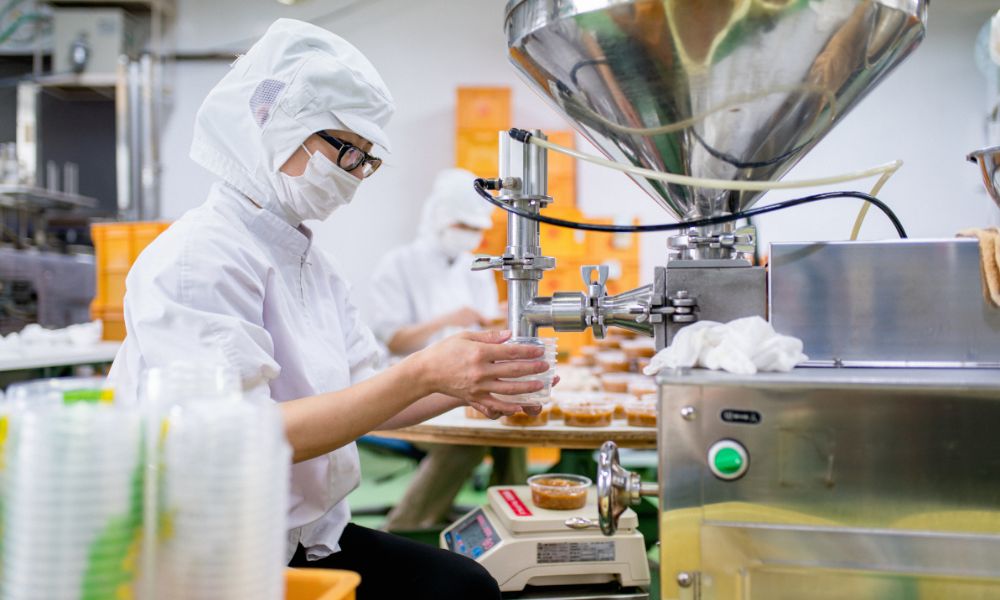In today’s world, where technology evolves rapidly, game and food processing have become two distinct yet interwoven industries. Both industries leverage innovation to captivate their audiences and provide engaging experiences. This article delves into how gaming elements and food processing methods intersect, offering a glimpse into the exciting prospects that emerge when these seemingly unrelated fields collaborate.
The Evolution of Game and Food Processing
The Role of Technology
Game & Food Processing, Technology is the driving force behind the evolution of both gaming and food processing. In the gaming industry, advancements in graphics, AI, and interactivity have created immersive experiences. Meanwhile, the food processing sector relies on automation, robotics, and smart devices to optimize production and ensure quality.
Although distinct, both industries share a reliance on innovation. For instance, gamification in food processing is emerging as a trend, where game-like features are integrated into manufacturing, marketing, or consumer engagement processes.
Gamification in Food Processing
Gamification refers to applying game-design elements in non-gaming contexts. In food processing, it enhances efficiency and consumer engagement. For example:
- Employee Training: Companies use interactive games to train employees in safety measures and machine operation.
- Quality Control: Gamified systems allow workers to identify defects in products, rewarding accuracy and speed with points or badges.
- Marketing Campaigns: Food brands use mobile apps or games to connect with consumers. These apps often involve challenges where users can win discounts or free products.
Gaming and Food Processing: A Consumer Perspective
Video Games and Culinary Adventures
Video games have increasingly incorporated food themes into their gameplay. Games like Overcooked! and Cooking Simulator provide players with a virtual kitchen experience, emphasizing the art and science of food preparation. These games not only entertain but also educate players about the fundamentals of food processing, including ingredient selection, timing, and workflow optimization.
Interactive Food Apps
The fusion of game mechanics with food apps has transformed how consumers interact with food brands. For instance, apps like MyFitnessPal or Yummly incorporate challenges and rewards to motivate users toward healthier eating habits. Food delivery services also use gamification to keep customers engaged, offering loyalty rewards or spin-the-wheel discounts.
Innovations Bridging Game and Food Processing
Augmented Reality (AR) in Food Manufacturing
AR technology is increasingly prevalent in both gaming and food processing industries. In food manufacturing, AR allows workers to visualize equipment operations, identify issues in real-time, and receive interactive training. Gamified AR apps make these tasks engaging and productive.
For instance:
- AR Maintenance Games: Technicians can play AR-based games that simulate machinery repair, helping them understand real-world tasks while earning virtual rewards.
- Interactive Factory Tours: Consumers and stakeholders can explore virtual tours of food processing plants, gaining insights into production methods and sustainability practices.
AI and Smart Kitchens
Artificial Intelligence (AI) plays a significant role in gaming and food processing. In gaming, AI powers non-player characters (NPCs), dynamic storylines, and adaptive challenges. In food processing, AI ensures efficiency, reduces waste, and maintains consistency.
Smart kitchens, combining AI and IoT, provide a perfect example of gaming principles in food preparation:
- Recipe Challenges: Smart devices can suggest recipes based on available ingredients and create a gamified experience where users earn points for minimizing food waste.
- Cooking Progress Tracking: Users can monitor their cooking progress, competing with friends or family to perfect their culinary skills.
The Future of Game and Food Processing
Edutainment Platforms
The intersection of game and food processing holds immense potential for educational and entertainment platforms. Imagine virtual reality (VR) games where users run a simulated food factory, learning about supply chains, sustainability, and health regulations. These platforms can engage both students and professionals, fostering interest in food science and technology.
Sustainable Practices Through Gamification
Sustainability is a priority in food processing, and gamification can drive eco-friendly practices. For instance:
- Carbon Footprint Games: Food companies can introduce games that allow consumers to calculate and minimize their carbon footprint based on food choices.
- Recycling Challenges: Gamified apps can encourage employees to recycle materials during production, rewarding teams for achieving sustainability goals.
Challenges and Ethical Considerations
Despite the potential, merging game and food processing comes with challenges:
- Data Privacy: Gamified systems collect user data, raising concerns about how this information is used and stored.
- Over-reliance on Technology: Excessive dependence on gamification may overshadow traditional methods, leading to skill gaps in non-digital contexts.
- Accessibility: Not all demographics have access to gaming tools, potentially excluding certain groups from these innovations.
Addressing these concerns requires transparency, inclusivity, and a balance between technology and human expertise.
Conclusion
The fusion of game and food processing offers exciting possibilities for innovation, consumer engagement, and education. By incorporating gamification into food production and marketing, companies can create memorable experiences while optimizing operations. Meanwhile, gaming continues to celebrate food as a central theme, fostering creativity and appreciation for culinary arts.
As these industries evolve, the collaboration between game design and food processing technologies will likely redefine how we produce, consume, and think about food in the years to come.





